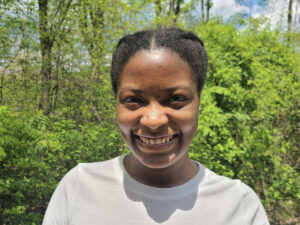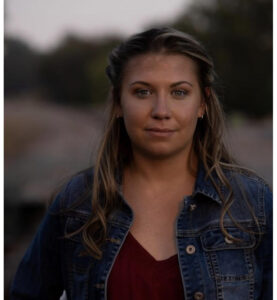The third-annual Adras & Altig Criminal Justice Essay Contest received many qualified and compelling essays. Although we wish we could grant scholarships to all applicants, we narrowed it down to 3 top essays.
Congratulations to the winners of the 2020 Scholarship Essay Contest:
- Eshaan Vakil
- Alanna Brown
- Raelynn Nuemann
Read the winners’ essays below and check back here to apply in 2021!
1st – Eshaan Vakil
 Few diseases have such a descriptive name as the “diseases of despair,” of which teen alcoholism is one. The very term conjures up visions of bleak hopelessness and left-behind communities, where the youth turn to drink as a way to soften the impact of worsening job prospects and a declining standard of living. The conversation on stopping underage drinking frequently revolves around countering motivations like “I drink because it helps me feel better,” but it is rarely asked why so many teens feel hopeless in the first place. Alcoholism is a symptom emanating from a deeper socio-economic malaise in the psyche of those who drink. In order to decrease the number of accidents, as counterintuitive as it seems, we must first tackle this social issue.
Few diseases have such a descriptive name as the “diseases of despair,” of which teen alcoholism is one. The very term conjures up visions of bleak hopelessness and left-behind communities, where the youth turn to drink as a way to soften the impact of worsening job prospects and a declining standard of living. The conversation on stopping underage drinking frequently revolves around countering motivations like “I drink because it helps me feel better,” but it is rarely asked why so many teens feel hopeless in the first place. Alcoholism is a symptom emanating from a deeper socio-economic malaise in the psyche of those who drink. In order to decrease the number of accidents, as counterintuitive as it seems, we must first tackle this social issue.
According to Shakespeare, “what’s past is prologue,” and this wisdom applies when predicting underage drinking. Heavy parental consumption of alcohol is highly correlated with teenage drinking for their children because children mirror what their parents do, and parental alcoholism normalizes the concept for the younger family members. The challenge of eradicating teen alcoholism, and thereby, teen accidents, lies in the fact that as long as children remain impressionable, and parents drink heavily, that behavior can be passed on, creating a deadly cycle.
This curse is not distributed evenly, either. Research has shown that alcoholism affects those who are most economically depressed and disheartened among us. Downwardly mobile populations, seeing no other solution to their woes, turn to drink, affecting their children and all those around them, a situation known as a “disease of despair.” While eliminating economic inequality is beyond the scope of a limited intervention to alleviate teen alcoholism, we can borrow something from the toolkit of those who work to stave off economic stress: education.
Increasing the quality of and access to education in communities that suffer from underage drinking tackles the issue from multiple avenues. It helps people find better jobs, reducing the adult alcoholism that influences so many youth. Better-funded schools are more likely to spend on courses that inform students about the negative health effects of alcohol. Finally, improved extracurricular programs give students interests and hobbies to keep them interested and give them a sense of purpose.
Students with strong motivations to succeed and do well in any task-a purpose-stay away from not just the bottle, but also harder drugs and criminal activity. In fact, they have better life outcomes in general. While education isn’t a cure-all, it’s a cure-most.
While in high school, I witnessed this solution first-hand leading the nonprofit I founded, the Alliance for Academic Quiz Bowl, that focuses on providing educational opportunities to students in underserved communities. We taught students going to under-resourced schools how to play quiz bowl, a game where players can be asked questions about academic subjects, and found that, after playing, students were engaged with their schoolwork and eager to learn. We also conducted summer camps for students where they learned about scientific topics in a fun way, and then learned to translate that into code, teaching them a vital skill in today’s modern world. Initiatives like these can help provide roadmaps for future educational programs that will help us stamp out the scourge of youth alcoholism once and for all, saving not just lives because of reduced accidents, but also restoring futures.
2nd – Alanna Brown
 When I began college, drinking was seen as the norm; dorm parties and pregaming were common, and there was a lingering expectation that all students wanted to drink alcohol. However, underage drinking not only carries numerous health risks, but can put others’ lives in danger if individuals decide to drink and drive. I believe steps can be taken to mitigate this issue, and the best way to tackle underage drinking is through prevention.
When I began college, drinking was seen as the norm; dorm parties and pregaming were common, and there was a lingering expectation that all students wanted to drink alcohol. However, underage drinking not only carries numerous health risks, but can put others’ lives in danger if individuals decide to drink and drive. I believe steps can be taken to mitigate this issue, and the best way to tackle underage drinking is through prevention.
The first prevention measure is to protect students from factors that may drive them to alcohol. Schoolwork, relationships, and an endless number of stressors could lead teens to choose alcohol to numb negative emotions. Therefore, young adults should be given space to talk about their fears and worries without judgment or condescension, which may come from teachers or parents when they speak out. A student-led “vent session” could help teens deal more healthily with their feelings while giving and receiving emotional support.
Additionally, I would implement education into school curriculums about the dangers of underage drinking. Learning about the physical risks, such as alcohol poisoning, were compelling reasons for me to avoid alcohol. However, there should also be education on treatments for alcohol poisoning and when to call 911. While the aim is to prevent all underage alcohol use, some teens may still choose to drink, and punitive actions are often counterproductive. It is better to arm teens with tools they need to protect the lives of others and face the topic head-on rather than shying away from the issue totally. Another area of education needed is the high risk of drunk driving. Looking at the stats and figures paints a good picture for students, but I was most deeply moved by hearing from victims or victims’ families about their experiences after being injured by drunk drivers. The emotional aspect of this education is something that everyone will be able to remember and relate to.
After education has been implemented, steps must be taken to change the culture and narrative around alcohol. Currently, many teens see alcohol as a way to relax, be more confident, or to fit in better with peers and classmates. Peer pressure often develops even if teens aren’t actively encouraging each other to drink, such as in a party setting. It is hard to be the only one in a room without a cup of alcohol. Thus, more explicitly substance free events and parties should be held at schools and universities. While living in the substance-free dorm of my university, we held a haunted house and a dance for students to have fun without alcohol. We also created a campaign to post flyers around campus with substance free celebrities’ stories. While these are small actions, they represent a great effort to shift the narrative around alcohol use.
The actions outlined above are effective ways to target underage drinking, but none of them are quick fixes or magic bullets. In order to permanently decrease underage drinking, we must attack the root causes of underage alcohol consumption and societal factors that cause teens to seek alcohol. While the changes will not manifest overnight, we must invest in strategies to better support youth and curb underage drinking.
3rd- Raelynn Neumann
 A crash is all it takes for a small community like mine to be rocked. Two lives were taken because they made the mistake of drinking. The impact that alcohol has can not only take lives, but devastate an entire population of people. That is what happened to Fallon, Nevada. And that is why I believe there needs to be a change.
A crash is all it takes for a small community like mine to be rocked. Two lives were taken because they made the mistake of drinking. The impact that alcohol has can not only take lives, but devastate an entire population of people. That is what happened to Fallon, Nevada. And that is why I believe there needs to be a change.
Underage drinking is a serious problem in the United States. The consumption of alcohol under the age of twenty-one is not only illegal, but costs an extensive amount of lives, especially those of the youth. Unfortunately, the trauma never leaves; families and friends are left with the guilt and the pain. This is an issue that needs to be fixed, and not pushed along, but permanently controlled.
Drinking under the age of twenty-one can be diminished greatly with the resources and help of a few groups or people. Schools and after-school programs should offer more mandatory classes and meetings amongst the teens. These will be programs during the normal school hours with knowledgeable teachers instructing the classes. Information, health facts, and personal
experiences can be given and told here. Programs should also be available to the parents and guardians (whether that be by the local police departments, volunteer groups, or law firms ). Here, resources (counselling, rehab, mentors, etc., as well as websites like STOP and SAMHSA ) can be handed out regarding what to do with an underage drinker.
In cooperation with classes and meetings, extracurriculars should be encouraged. Extracurricular activities have the possibility to deter many teenagers from drinking because it drives the teens to be competitive, or to use the skills that they have. These activities can connect the youth with positive role models, as well as provide them with a beneficial source of adrenaline besides alcohol. In addition, this strategy can also equip the teenagers with valuable life lessons that they can carry with them for the rest of their lives.
And lastly, our laws and regulations need to be more strict; these need to be strict on both a commercial and consumer level. Staff/Employees need to be trained to ID all customers, as well as how to spot a fake ID. Employees also need to be trained to say “no”. If they feel that the buyer is underage (with a seemingly realistic fake ID), they have the right to refuse service, and should be trained to properly turn them away. Our laws need to be more severe with an underage drinker as well. They need to be mandated to complete the programs like DARE, with local government seeing their completion.
The United States needs to be more prepared with how to treat teen drinking. These strategies will help reduce the number of underage drinking incidents, as well as preventing young lives from being taken in car accidents. Many communities go through this hardship; however, no other family or community should have to go through a tragic loss like that of Fallon’s. We are the future of this amazing country, and we need to stand up to underage drinking; we need to stand up to ourselves; we need to stand up to alcohol; and we need to be the future we deserve.
- About the Author
- Latest Posts

At Adras & Altig, we believe that every client we work with deserves a fresh start. Our dedicated Las Vegas criminal defense attorneys take the time to get to know you so we can understand the circumstances surrounding your arrest.
